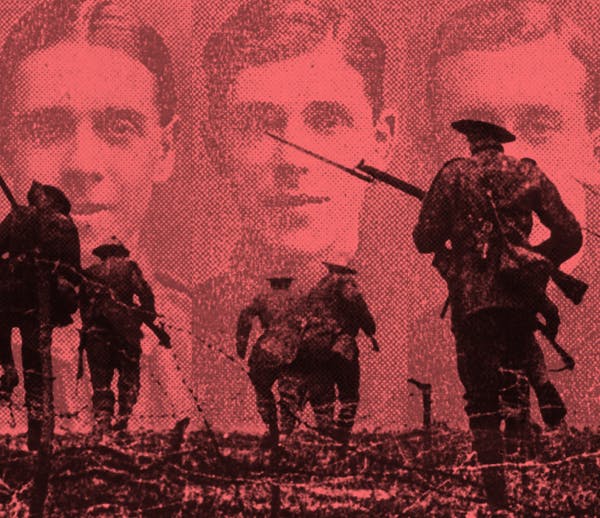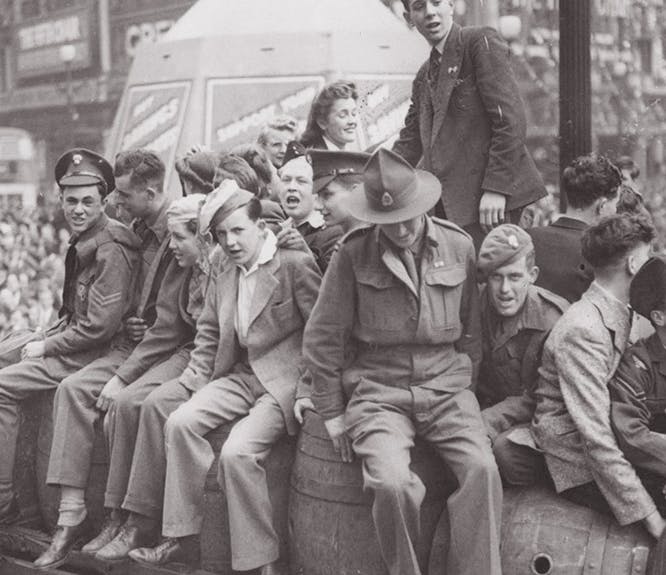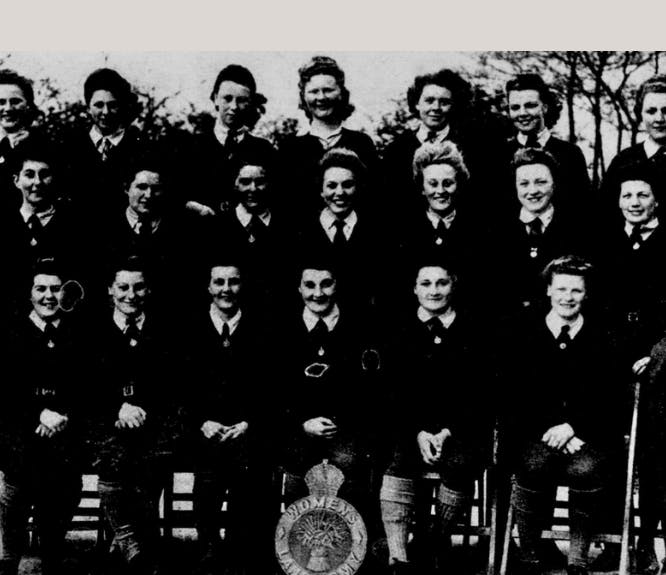Your go-to guide to jobs in 1920s Britain
2-3 minute read
By The Findmypast Team | October 11, 2022
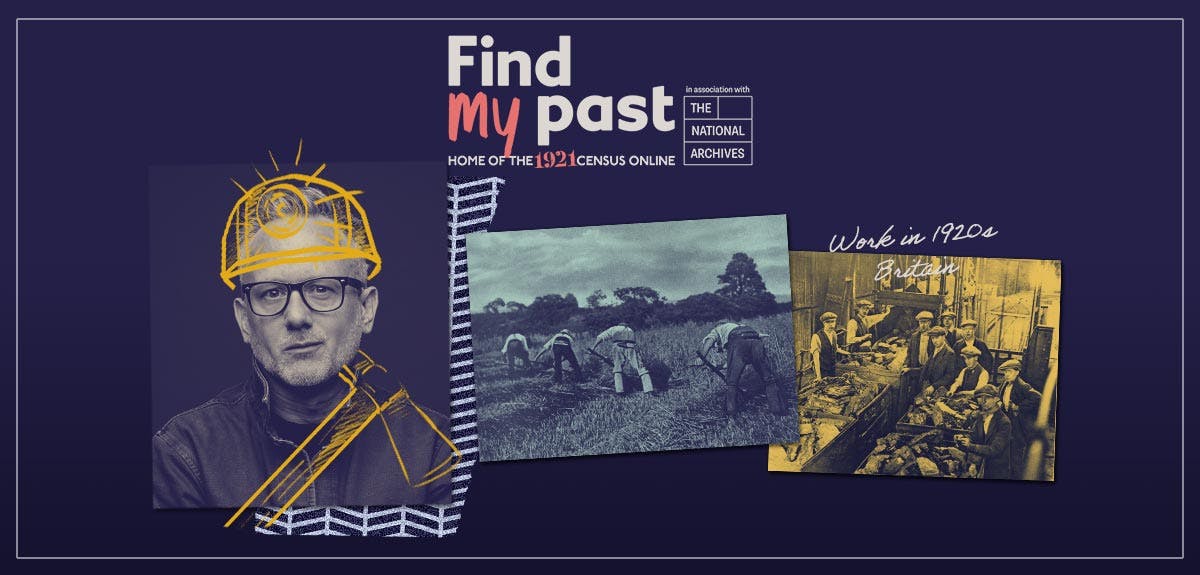
Was your grandmother one of the first policewomen? Or your great uncle one of the last mole-catchers? The 1921 Census of England and Wales was the first to capture employment details. But what do we already know about jobs in the 1920s?
The 1920s was a decade of contrasting halves in the UK. The early years ushered in a new sense of optimism. War was over, women were more independent than ever before and there were significant advances in science and technology. Despite the country recovering from the devastation of war, in many instances, the Roaring Twenties had well and truly arrived.
However, by the middle of the decade, the tide had turned and over 2 million people were unemployed. In some places, unemployment rates hit over 70%. Worker unrest and strikes were the order of the day and the economy declined. The decade ended with the Wall Street Crash, paving the way for even more depression in the 1930s.
For those lucky enough to hold onto a job, what were they working as?
What were the most common jobs in the 1920s?
Over 1.1 million men recorded themselves as working in the coal mining industry in the 1921 Census. This figure had grown by 16% since the 1911 Census.
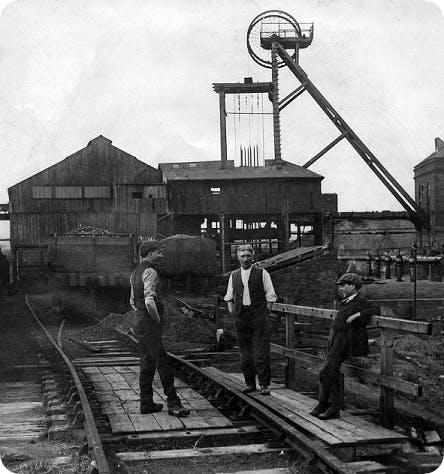
Wirral Colliery at Neston, 1925. View full-size in the Findmypast Photo Collection.
Most women worked in the ‘private personal service’ industry, with over a million listing themselves as such in the census. But the number of women in those roles had declined by 20% since 1911.
Let’s delve a little deeper into the type of work women did in Britain during the 1920s.
Women's work
Thanks to the suffragettes, women had successfully won the vote in 1918. This newfound sense of independence among British women in the 1920s is reflected in the jobs they were doing at the time. The 1921 Census features the first female police officer and the first female racing car driver.
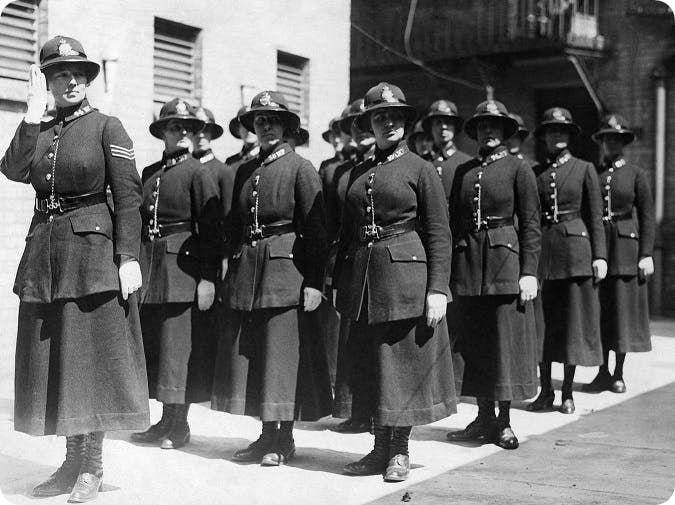
A squad of policewomen lines up for duty, 1921. View full-size in the Findmypast Photo Collection.
Women began finding their way into roles traditionally taken by men. Compared to a decade earlier, there were more women working in medicine, engineering, and law.
But change didn’t come overnight. In 1921, over 1.5 million women still worked in personal service and 92% of laundry workers were female. The most common positions in the personal service industry were domestic servants, charwomen, and housekeepers.
In the stationery and paper industry, women made up over 80% of the workforce yet over 75% of the managerial roles were given to men. A century later, we still see remnants of this inequality throughout working life.
Regional employment in the 1920s
Although the world was also recovering from a pandemic at the time, unlike today, remote working wasn’t an option back in the 1920s. Usually, where our ancestors lived dictated the type of work they were likely to be doing. Manual workers tended to live closer to their jobs, while professionals could afford to live further away.
City life suited clerks, charwomen, and professionals while more rural settings were populated by farmworkers, mass production factory staff, and small business owners.
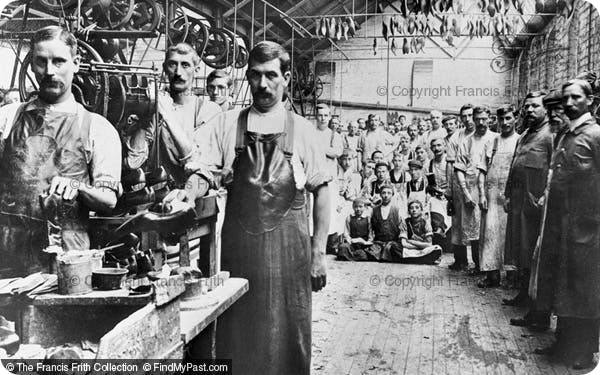
Workers in Mason & Marson shoe factory, Stafford, 1926. View full-size in the Francis Frith Collection.
Lancashire had thriving cotton and leather manufacturing industries while hosiery dominated in Leicestershire.
Metalworkers were prevalent in Sheffield and Birmingham. Milliners were found in abundance in Bedfordshire and coal miners were most numerous in Glamorgan and Durham.
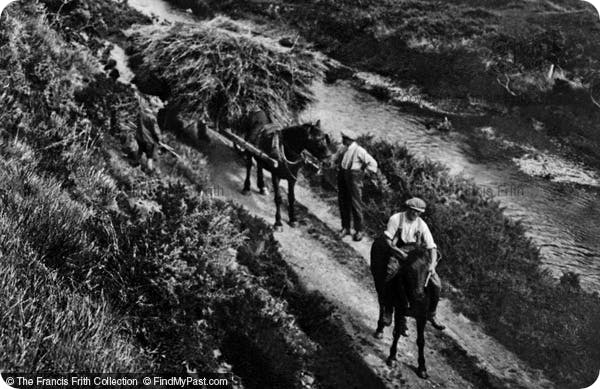
Farmers at work in Borth, Wales, 1925. View full-size in the Francis Frith Collection.
Pottery makers were most likely living in Stoke-on-Trent, soap makers in Lancashire and Cheshire and brewers in Burton.
Work in the 1920s wasn't just affected by where our ancestors lived. Other circumstances also came into play.
What was the legal working age in 1920s Britain?
With the introduction of the Education Act, most children entered the workforce when they left school aged 14 but the 1921 Census records anyone employed from age 12 upwards.
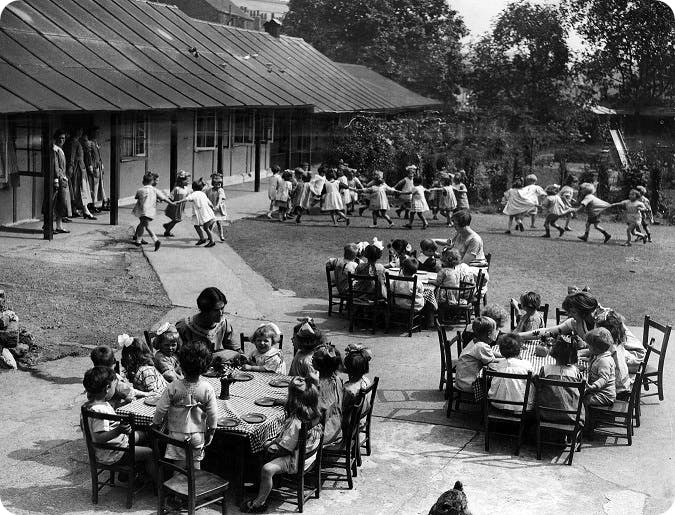
Schoolchildren and teachers in Deptford, 1926. View full-size in the Findmypast Photo Collection.
The new legislation resulted in the number of 12- and 13-year-olds recorded in employment dropping by over 50% from a decade beforehand.
When it comes to working ages, interestingly men tended to work until they were much older in South Wales. While the number of men working in the 20-44 age range decreased when compared to the 1911 Census. No doubt, a direct impact of the First World War.
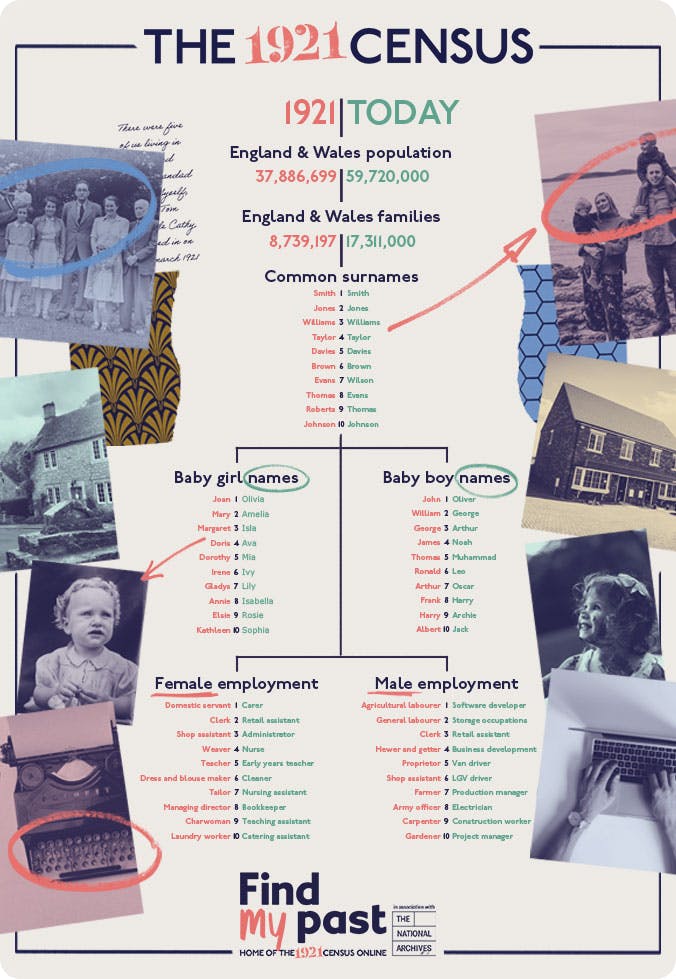
Discover 1921 versus 2021. View in more detail here.
22% of the men recorded in the 1921 Census were retired. Most of them were found in the Isle of Wight, Cornwall, and Westmorland while there were much fewer retirements in Glamorgan, Monmouth, and Warwick.
Was your great-grandmother blazing a trail in a male-dominated field back in the 1920s? What industry thrived in your town a century ago? Exploring the 1921 Census reveals all for the first time. It can change how you see your past and maybe even your future.

